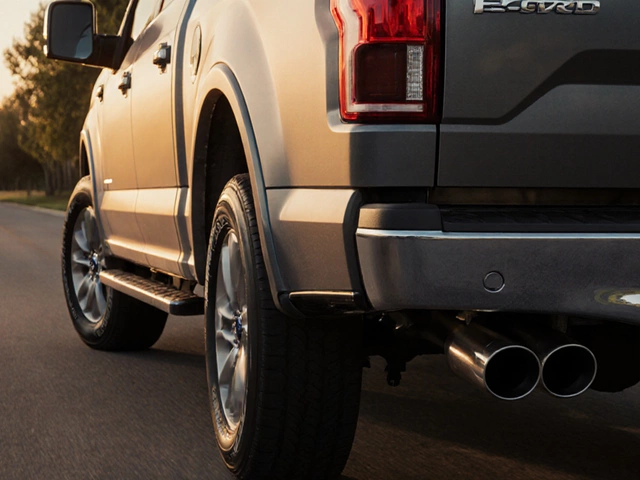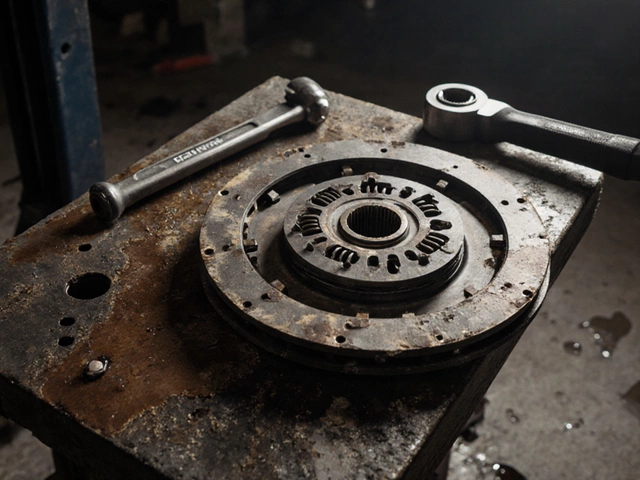So, you're wondering about the color of your engine oil, huh? If you’ve ever peered at the dipstick and pondered, “Is that color normal?” you’re not alone. Engine oil doesn’t just keep your car running smoothly; it tells its own story about your engine's health. Paying attention could save you from hassle and hefty bills.
Let's kick off with the basics. Fresh engine oil is usually amber—golden and clear. As you drive, it picks up dirt, becomes darker, and thickens. This change is totally normal over time. But some colors scream 'help!' more than others. Black, milky, or gritty oil isn't something to brush off. These colors shout out loud that something might be up.
Checking your oil isn't just a job for mechanics. Anyone with a car can rock this task with a simple pop of the hood. But why stop at checking if you can prevent issues down the road by understanding what those colors mean? Learn it now; your engine will thank you later.
- The Basics of Engine Oil Color
- Common Colors and What They Mean
- How Often to Check Your Oil
- Signs You Need an Oil Change
- DIY Tips for Checking Engine Oil
The Basics of Engine Oil Color
The first thing to know about engine oil is that it starts out as a bright, amber liquid. This is the freshest it'll ever be in your car—looking all golden and clean. But don't expect it to stay that way. As soon as the engine runs, the oil begins its slow change in color, which is completely natural.
But wait, why does this happen? Well, as engine oil circulates, it catches all sorts of tiny dirt and debris. It also absorbs byproducts from combustion, and all this action eventually turns it darker. It's basically a clue that the oil is doing its job—carrying those nasty particles away from the engine components.
So why should you care? Because understanding these color changes can keep your wallet happy. Regularly checking the oil color helps spot problems early. A simple habit that a lot of us overlook.
When to Worry About Dark Oil
A dark hue in itself isn't always a sign of immediate trouble, but there's a caveat. If the oil's pitch-black soon after a change, that’s a red flag—it shouldn't get that dirty so quickly. Could be a sign of an underlying issue like excessive engine deposits.
Look for signs like burnt smell, or gritty texture—your oil could be crying out for an urgent change. This could affect how well your car runs and also its fuel efficiency.
Recognizing Other Problematic Colors
Another thing to watch out for: oil that’s milky or cloudy. This shouldn't happen in engines with a clean bill of health. It might mean coolant is mixing with the oil—a situation that needs professional attention ASAP.
By the way, if the oil looks foamy or bubbly, you're in need of a check too. It could suggest water contamination, usually another symptom of something bigger.
Common Colors and What They Mean
Ever wondered what all those colors in your engine oil mean? It's like your car’s way of telling you what’s up. Knowing what to look for can help you catch problems early and save you from a whole load of trouble later.
Amber and Clear
If your engine oil is amber and clear, you're in the safe zone. Fresh engine oil usually looks like this. It's doing its job, keeping the engine parts lubricated, and collecting dirt. But, don't get too comfy—keep checking it regularly.
Dark Brown or Black
Now, if it's dark brown or black, that's still within the realm of normal if you've been driving a while since your last oil change. Oil change time might be approaching. Keep in mind that long drives and heavy loads can speed up the darkening process. However, if the oil is really thick, it might be time for an immediate change.
- Light Brown and Frothy: This is not a good sign. It often means that coolant is leaking into your engine, possibly a blown head gasket. Time to visit the mechanic!
- Milky or Creamy: Much like light brown and frothy, milky oil suggests water contamination. Look out for this when you've just driven through heavy rain or floods.
Gritty or Sludgy
Feel a gritty texture? That’s a no-go. Grit or sludge in your oil can spell engine doom. It's a sign that there are contaminants and that the oil isn't circulating properly, creating abrasive conditions.
The Takeaway
So, why does this matter? Understanding bad oil color isn't just about feeling like a car guru. It helps prevent big setbacks, increases the lifespan of your engine, and saves you money on avoidable repairs. Keep an eye on those colors, and you'll be ahead of the game.

How Often to Check Your Oil
Wondering if you're checking your engine oil enough? It's not just an expert's job; you can do it too. Most folks check their oil every month, but depending on your driving habits, you might want to do it more often. Regular checks will catch any changes in color or consistency, helping you know if it's time for an oil change.
When to Check
You should check your oil more frequently if:
- You do a lot of stop-and-go driving.
- Your car often carries heavy loads.
- Your environment is dusty or severe.
- You drive long distances regularly.
If any of these sound familiar, consider upping your oil checks to every couple of weeks. After all, keeping tabs on your oil is one of the easiest ways to avoid engine troubles.
Easy Steps to Check Oil
Checking it is simple and quick. Here’s what you do:
- Park on a level surface and turn off the engine.
- Wait a couple of minutes for the engine to cool.
- Locate the dipstick and pull it out.
- Wipe it clean with a cloth or paper towel.
- Reinsert the dipstick all the way, then pull it out again.
- Check the oil level and color.
If the oil is below the mark or looks off, it might be time for a change.
A little effort can go a long way in maintaining your car’s health. Regularly checking your oil doesn't just help your vehicle—it also gives you peace of mind. So next time, before putting off that monthly check, remember, it only takes a few minutes!
Signs You Need an Oil Change
Not sure if it’s time for an oil change? Your car usually gives a few hints. Ignoring them might leave you with a hefty repair bill or worse, a dead engine. Here’s what you need to watch out for.
1. Dashboard Oil Light
First and foremost, check your dashboard. If the oil light pops up, don't ignore it. It's a clear sign that your engine oil might be low or your oil pressure is off the charts. Either way, it's time for a change.
2. Dark or Dirty Oil
We’ve talked about the color of engine oil. Fresh oil is a translucent golden color. Over time, it turns dark due to dirt and particles. When you see that it looks gritty or black, an oil change should be on your to-do list.
3. Loud Engine Noises
If your engine starts clattering or making unexpected noises, your oil might not be lubricating the moving parts properly. Oil thickens with use, and thicker oil can’t work as effectively.
4. Increased Mileage
Have you been hitting the road a lot? Most mechanics suggest changing your oil every 3,000 to 5,000 miles for older cars, or as your car manual advises for newer models. Jewel in the crown, your vehicle's life depends on regular oil changes.
5. Exhaust Smoke
See smoke, not steam, escaping your tailpipe? That’s another sign your oil's breaking down. It’s crying out to be swapped with fresh, efficient oil.
| Sign | Description |
|---|---|
| Oil Light | Low oil or pressure issue |
| Dark Oil | Oil is dirty or gritty |
| Engine Noises | Oil not lubricating well |
| Mileage | Hit mileage mark, check oil |
| Exhaust Smoke | Possible oil breakdown |
Keep this checklist in mind to ensure your engine’s always happy and humming. Regular maintenance could mean the difference between a smooth drive and an unexpected stop on the side of the road. Your car—and your wallet—will thank you.

DIY Tips for Checking Engine Oil
Checking your engine oil is one of those essential car maintenance tasks that everyone should know. It's quick, it's easy, and it'll help you catch problems early on. Here's how to do it like a pro.
Getting Started
First things first, make sure your car is parked on a level surface and the engine is cool. A hot engine might give you a false reading, plus nobody wants to burn themselves!
- Open the Hood: Just like popping the tab on a soda can, open up that hood and locate the dipstick. It's usually got a bright-colored handle, so it's not too hard to spot.
- Pull Out the Dipstick: Once you find it, pull it out and wipe it clean with a rag or paper towel. You want a clear view when checking the level.
- Check the Level: Reinsert the dipstick fully, then pull it out again to see where the oil line is in relation to the "full" and "low" marks. Ideally, it should be somewhere close to "full."
- Assess the Color: This is where your color detective skills come in. While fresh oil is amber, it darkens over time. Look out for anything unusual, like a milky coat or gritty texture. If you spot that, it might be time for a change or even a check-up.
- Top it Up if Needed: If the oil level is low, use a funnel to add more oil of the right viscosity for your engine. Go slow to avoid overfilling.
Pro Tips
- Check the oil every month or so, especially before long trips. It's a quick check that can prevent a lot of headaches.
- Always use the type of oil specified in your vehicle's manual. Different engines have different needs.
- If you DIY the oil change, make sure to dispose of the old oil properly. Many auto shops will take it off your hands for recycling.
By keeping tabs on your oil color and level, you're doing your car a huge favor. Neglecting this simple task could lead to wear and tear that no one wants. So go ahead, grab a rag, and get to know your engine a little better!






